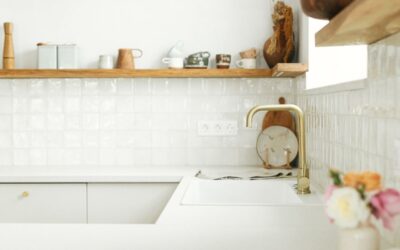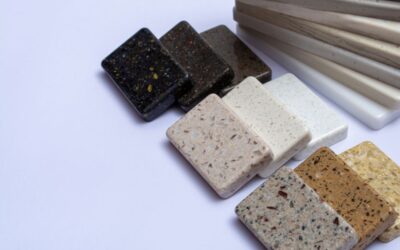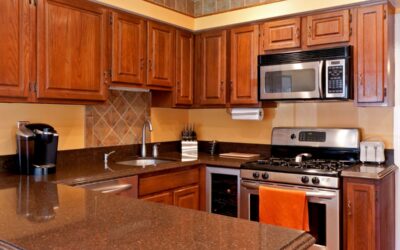5 best Kitchen Tools & outdoor kitchen design tool with tips

As an Amazon Associate, I earn from qualifying purchases
Introduction:
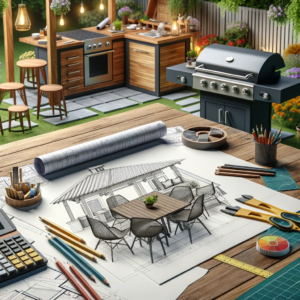
Outdoor kitchen design tools are imaginative computerized arrangements that change the way property holders, engineers, and planners approach the creation and customization of open-air cooking spaces. These instruments mix easy-to-use communication with strong perception capacities, permitting clients to design and rejuvenate their ideal outside kitchen formats carefully. From choosing the ideal machines and materials to organizing furniture and embellishments, these instruments offer an exhaustive stage for creating practical and stylishly satisfying open-air culinary conditions.
They not only work with a really captivating and intelligent plan process but also essentially help in direction, guaranteeing that the last outside kitchen meets explicit useful prerequisites as well as fits with the general vibe of the open-air living region. Whether for a basic family patio grill arrangement or a sumptuous outside culinary station, open-air kitchen configuration devices are imperative in understanding the ideal equilibrium of style, comfort, and usefulness.
Benefits of Using Outdoor Kitchen Design Tool
Below are some important facts about the “Outdoor Kitchen Design Tool” benefits:
Visualization: These apparatuses permit you to imagine the kitchen format before any actual work starts. You can perceive how various components like barbecues, ledges, and seating regions will search in your outside space.
Customization: Plan devices empower you to alter each part of your open-air kitchen, from the situation of machines to the selection of materials and varieties. This guarantees the last plan lines up with your own inclinations and useful necessities.
Space Optimization: They help in successfully using accessible space. You can try different things with various formats to see which one expands usefulness and solace.
Budget Management: By choosing various choices in the plan device, you can get a good guess of the expenses in question, assisting you with pursuing informed choices and adhering to your spending plan.
Error reduction plan devices diminish the risk of mistakes in the arranging stage. By seeing a virtual portrayal, you can distinguish and correct potential plan issues before they become expensive mix-ups during development.
Outdoor Kitchen Design Tool Apps
Outdoor kitchen design tool apps are digital applications specifically created to aid in the design and planning of outdoor kitchens. These apps are particularly useful for homeowners, designers, and contractors. Here’s more about them:
Functionality: These applications commonly offer a scope of highlights, for example, choosing kitchen machines, picking materials for ledges and decks, picking furniture, and, in any event, adding lighting and extras. Clients can relocate these components into a virtual space, making a format that matches their vision.
User Interface: They are intended to be easy to understand, taking care of the two experts and novices. The point of interaction is normally natural, with the simple route, which makes the planning cycle open to everybody.
Visualization: One of the key advantages is the capacity to envision the outside kitchen in 3D. This aids in understanding how the space will look and work truly, considering changes before any genuine development work starts.
Customization: Clients can modify pretty much every part of their open-air kitchen, from the size of the region to the sort of barbecue or stove they need to introduce. This guarantees that the last plan addresses explicit issues and inclinations.
Cost Assessment: Some applications additionally incorporate elements for planning, giving appraisals to the picked plans. This assists with regard to following costs and settling on practical decisions.
Coordinated effort and Sharing: These devices frequently permit clients to impart their plans to family, companions, or workers for hire. This works with criticism and cooperative navigation, guaranteeing that all partners settle upon the last plan.
Access to Ideas and Trends: Many plan applications accompany an exhibition or motivation segment, where clients can investigate the latest things, styles, and thoughts, which can be integrated into their plans
Five Best Kitchen Tools
Cutting board
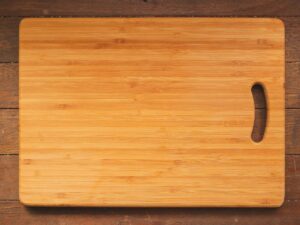
A cutting board (or cleaving load up) is a sturdy load up on which to put material for cutting. The kitchen cutting board is regularly utilized in getting ready food; different sorts exist for cutting natural substances like cowhide or plastic. Kitchen cutting sheets are frequently made of wood or plastic and come in different widths and sizes. There are likewise cutting sheets made of glass, steel, or marble, which are more straightforward to clean than wooden or plastic ones like nylon or corian, yet will generally harm blades because of their hardness. Harsh forefronts — like serrated blades — rub and harm a cutting surface more quickly than smooth cutting carries out.
How to use a Cutting board?
Choose the Right Board: Select a board in view of the food you’re getting ready. Wooden sheets are really great for organic products, vegetables, and bread, while plastic sheets are better for crude meat, poultry, and fish to forestall cross-tainting.
Stable Placement: Put the board on a level surface. To forestall slipping, you can put a sodden fabric under it.
Cutting Procedure: Cleave, cut, or dice on a case-by-case basis. Keep the tip of the blade on the board and utilize a shaking movement for slashing.
Keep It Clean: After each utilization, particularly while cutting crude meat, wash the board with hot, sudsy water. Disinfect it consistently with a gentle fade arrangement or vinegar.
Stay away from Cross-Pollution: Utilize separate sheets for crude meat and different food sources. This is significant for sanitation.
Maintenance: Wooden sheets need normal oiling to forestall drying and breaking. Try not to absorb the water.
Removal of Waste: Utilize a seat scrubber or blade to move sliced things to a bowl or skillet and clear pieces into a waste compartment.
Colander

A gadget utilized for emptying food fluids. It comprises a bowl built of metal or plastic that is covered with a progression of openings through which the fluid can deplete. The bowl typically has two handles, and it might likewise contain a base or legs. Colanders are helpful for emptying water of bubbled food sources, for example, bigger pasta shapes and potatoes. They are additionally helpful for cleaning lots of products of the soil, permitting water to be depleted as it is washed over the food.
How to use Colander?
Depleting Cooked Pasta or Vegetables: In the wake of bubbling pasta or vegetables, cautiously pour the items in the pot into the Colander. The Colander’s openings will permit the heated water to deplete away while holding the food. Guarantee the Colander is put in the sink prior to doing this to keep away from spills.
Washing Fixings: Colanders are perfect for flushing natural products, vegetables, or grains like rice and quinoa. Place the things in the Colander and run cold water over them, shaking the Colander tenderly to guarantee all pieces of the food are washed.
Depleting Canned Merchandise: You can utilize a colander to empty the fluid of canned things like beans or fish. Essentially, open the can, void its items into the Colander, and let the overabundance fluid channel away.
Steaming: A few colanders can be utilized for steaming vegetables. Place the Colander over a pot of bubbling water (guarantee the water doesn’t contact the lower part of the Colander), add the vegetables, and cover with a top. The steam will cook the vegetables.
Cooling or Drying: In the wake of whitening vegetables or washing them, you can pass on them in the Colander to cool or air dry.
Tidying with Powdered Fixings: A colander can likewise be utilized to uniformly disseminate powdered fixings like flour or powdered sugar over food things. Simply add the powder to the Colander and tenderly tap the sides to sprinkle.
Whisk
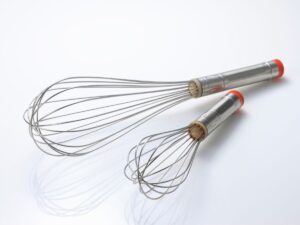
A whisk is a cooking ware, normally made of metal or silicone, comprising of a handle and a progression of wire circles joined toward the end. It’s basically utilized for mixing fixings easily, integrating air into combinations, and forestalling bumps. The plan of a whisk takes into consideration fast, effective blending or whipping, making it a fundamental instrument for errands like beating eggs, whipping cream, emulsifying dressings, or smoothing players and sauces.
There are a few sorts of whisks, including the inflatable Whisk, which is perfect for whipping air into light combinations; the level whisk, ideal for sauces in a shallow skillet; and the French race, with a more stretched shape reasonable for general blending. Whiskes change in size and firmness, with some having silicone coverings for use in non-stick cookware. Legitimate use includes an energetic side-to-side or round movement, guaranteeing the fixings are completely blended or circulated air through on a case-by-case basis.
How to use Whisk?
Select the Right Whisk: Pick a whisk in view of your undertaking. An inflatable whisk is great for whipping air into blends, a level whisk is perfect for sauces, and a French whisk is flexible for general blending.
Hold it Appropriately: Grasp the handle of the Whisk immovably. Your hold ought to be agreeable yet secure to take into account lively development.
Blending Strategy: For blending fixings, embed the race into the combination and utilize an energetic, side-to-side, or round movement. This guarantees that all parts are entirely consolidated.
Whipping Air into Combinations: While whipping something like egg whites or cream, utilize a quick, predictable round or side-to-side movement. The objective is to consolidate however much air as could be expected, making a light, fleecy surface.
Forestalling Sprinkling: Begin gradually, particularly while managing fluid fixings, to forestall sprinkling. As the blend thickens, you can speed up.
Arriving at Corners: Try to move the race around all regions of the bowl, including the sides and base, to consolidate all fixings appropriately.
Cleaning the Race: After use, wash the Whisk quickly to keep the fixings from drying and staying. Wash it with warm, sudsy water, guaranteeing all buildup is taken out from the wires.
Tongs
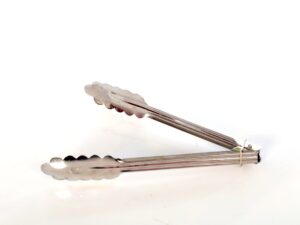
Tongs are unimaginably flexible and significant devices in the kitchen, utilized for different purposes. Whether it’s flipping burgers and barbecuing meats or cautiously putting trims for a dazzling show, tongs are fundamental. In this aide, we’ll investigate various sorts of tongs explicitly created to make specific errands more effective. Along these lines, you should rest assured you’re utilizing the most reasonable tong for your culinary requirements.
How to do Tong?
Select the Right Tongs: Pick the fitting sort of tongs for your errand. Standard utensils are adaptable for general use, while silicone-tipped tongs are perfect for non-stick cookware, and long utensils are great for barbecuing.
Grasp and Control: Hold the utensils close to the furthest limit of the handle for greatest control. Most tongs have a spring-activity instrument that opens and shuts the arms when you apply pressure.
Getting Food: Delicately press the handle to close the arms around the food thing. Ensure you have a firm yet not pounding grasp, particularly on sensitive things.
Turning and Flipping: Utilize a smooth wrist movement to turn or flip things, whether you’re cooking meat on a barbecue or blending vegetables in a container.
Serving Food: Tongs can be utilized for serving salad, pasta, or different things. Tenderly get the piece of food and lift it onto the plate.
Keeping up with Security: While barbecuing or taking care of hot food, guarantee the tongs are sufficiently long to keep your hands at a protected separation from heat sources.
Cleaning: After use, completely clean the tongs with cleanser and water, trying to clean the arms where food particles can get caught.
Grater

A grater is a kitchen instrument normally made of metal; however, some are created from earthenware or wood, highlighting sharp holes or edges for destroying food. They shift in size, with bigger holed graters usually utilized for cheddar and vegetables and exceptionally fine graters or microplates ideal for zesting citrus natural products. Microplanes are especially preferred for their capacity to deliver finely ground fixings. Graters explicitly intended for grinding new ginger or wasabi are frequently made of porcelain or bamboo, utilizing spikes or edges to successfully grind these stringy rhizomes without the stopping-up issues seen in customary graters.
How to use Grater?
Choose the Right Grater: Select a grater in light of what you want to grind. Utilize bigger openings for coarser shreds (like cheddar and vegetables) and more modest openings or a microplane for better grinding (like zesting citrus or ground ginger).
Stable Situating:
- Put the Grater on a level surface.
- On the off chance that it’s a handheld grater, hold it immovably with one hand and utilize the other hand to grind.
- For box graters, hold the top handle with one hand and utilize the other to grind.
Appropriate Procedure: Hold the food thing safely and slide it downwards along the Grater’s surface in one smooth movement. Try to avoid this way and that saw movements, as they can be not so much successful but rather more risky.
Applying Tension: Apply consistent, moderate strain while grinding. An excess of power can cause slipping or injury, and too little will not actually grind the food.
Grinding Little Things: While grinding little things like garlic or ginger, be careful as your fingers draw near to the Grater’s surface. Think about utilizing a gatekeeper or glove to safeguard your fingers.
Cleaning the Grater: After use, clean the Grater to keep buildup from staying. Utilize a brush to eliminate any remainder from the cutting edges securely.
Wellbeing First: Forever be aware of your fingers and knuckles while grinding, particularly as the piece of food gets more modest.
Read More :
- bathroom sink faucet parts diagram
- kitchens with taj mahal quartzite
- 20 kitchen tools and equipment
- is taj mahal quartzite outdated
As an Amazon Associate, I earn from qualifying purchases




